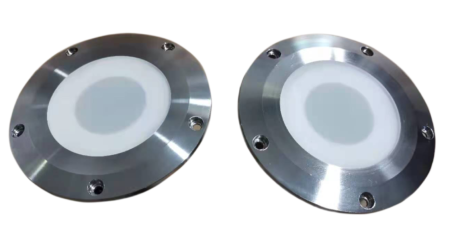Buyer’s Guide For LED Flood Lights [for 2023]
Table of Contents
A Guide to LED Flood Lights Purchase
![Buyer's Guide For LED Flood Lights [for 2023] 1 Buyer's Guide For LED Flood Lights [for 2021]](https://www.enkarl.com/wp-content/uploads/porto_placeholders/100x75.jpg)
LED Flood Lights – What Are They?
A: LED Flood Lights are wide-angle lights used to illuminate a big area or “flood” it with light. Featuring energy-efficient, the LED floodlight can be in various sizes and shapes. It can be a recessed PAR-style LED light bulb or a parking lot flood light.
LED flood lights are high-intensity lights that are used to illuminate huge regions. They come in a variety of configurations and are used for a variety of applications. Their primary function is to cast a wide arc of light across a vast region.
LED flood lights are available in a variety of shapes and sizes to accommodate a variety of customer needs and requirements. Flood lights are extremely useful for various purposes, from lighting up enormous stadiums and parks to lighting up your yard. They are primarily used outside, although you may also see them inside, such as a garage or warehouse. They are frequently employed for security purposes and are occasionally used to illuminate advertisements such as billboards. Solar LED floodlights can be utilized to eliminate the requirement for direct electricity in homes and parks.
RELATED: Buyer’s Guide for LED Floodlights [2024]: Essential Tips & Insights
Why Would You Use LEDs for Flood Lighting?
Cost:
Prices are really low at the moment. However, flood lights may be quite costly, which is where LED flood lights come in. They provide an enormous amount of light on the price you will pay. Additionally, LED bulbs have a very long life of 50,000+ hours. Because you won’t be replacing bulbs regularly and will require very little maintenance, the long-term expenses of LED flood lights are significantly lower than those of traditional lighting.
Savings on energy:
The best feature of LED flood lights is their energy efficiency. They consume around 70% to 80% less energy than conventional flood lights.
Look:
Additionally, you should select LED flood lights because they have a simple and stylish design that will illuminate an area for whatever purpose you have.
Ease:
They are quite easy to operate, even for those who have never used these lights before. They require little maintenance and can be used by anyone.
Safety:
These lights contain no mercury or lead, making them significantly safer than traditional types of lighting. Additionally, LED luminaires (the scientific word for fixtures or lamps) are more environmentally friendly than all other types of HID bulbs (metal halide/HPS/etc.).
What use do flood lights serve?
LED flood lights can be used in retail establishments. However, stores may require stronger lighting due to the wider area and the desire of shoppers to see the merchandise easily. For such a large space, 70-80 foot candles are recommended.
LED flood lights can also be beneficial for illuminating warehouses. They are helpful at night and during the day, as warehouses frequently lack natural light from the outside. The range of foot-candles available in warehouses varies according to the sort of labor being performed. 30-foot candles are mostly used in warehouses for storage and operations that require little light. A warehouse that houses mechanical and detail work may have a ceiling height of up to 100-foot candles.
Storage: LED flood lights can be used to illuminate covered or indoor storage areas. For storage areas, 30-foot candles are recommended.
Photometric studies are extremely beneficial when determining lighting for major commercial projects. It will assist in determining the brightness, intensity, and uniformity of light over a property. For a more in-depth discussion of photometric studies, see the article Photometric Study.
Which wattage and lumens am I looking for?
Utilize lumens rather than watts:
When selecting a typical incandescent bulb, the standard method of determining the brightness of a bulb is to multiply its watts by its wattage. Because LED lights are far more efficient and produce significantly more lumens per watt, it’s time to rethink how you think about brightness. For instance, a 150-watt incandescent bulb produces around 2600 lumens. On the other hand, a 150 watt LED UFO high bay light produces over 21,000 lumens or over eight times the brightness. Watts indicates the amount of energy consumed by the lamp, whereas lumens indicate the amount of light produced by the lamp. With the efficiency of LED luminaires, it’s time to think about lumens, not watts, when it comes to lighting. The higher the lumen rating of the bulb, the brighter it will be!
How many lumens are required?
This can become complicated. Different situations necessitate varying degrees of light. If you already have some traditional lighting that you wish to replace with LED bulbs, you can compare the lumens output of your current lighting to the output of the LEDs you wish to replace. Calculating your lux (or lumens per square meter) in a new setting is dependent on the lighting atmosphere you desire. For example, a typical office may have a light output of 300-500 lux, but a family room in a house may have a light output of less than 50 lux, and a supermarket may have a light output of close to 1000 lux. Now consider that daylight can be up to 100,000+ lux, which complicates the computations. When in doubt, consult an expert.
Spacing
When purchasing LED flood lights, many individuals become perplexed about the sort of lights to purchase and how much space between the lights to maintain. When it comes to spacing, a number of distinct aspects are taken into consideration. The height of the lights, their lumen output, the lighting mood you wish to create with these lights, and the spacing between the lights. For many LED flood light applications, some overlap, or cross over-illumination, is desirable to balance the light and minimize shadows. For instance, on an outdoor sports court, where shadows from distracting action are undesirable. If you’re unsure of the style of spacing to use, get advice from a knowledgeable source.
How many lamps should you purchase?
The most critical factor to consider when purchasing LED Flood lights is why they are being purchased. Once you’ve determined the type of lighting required for your purpose, you can calculate light heights and spacing to arrive at the optimal number of lights. Additionally, an approach that may be beneficial for you is building a layout and checking whether it makes sense. This will include the reason for which these lights will be used and all the necessary information for you to purchase the required quantity of lights.
How can I count the number of foot candles and lux?
Lumens indicate the amount of light emitted by a luminaire but not its direction. Lux or footcandles is a unit of measurement that takes into account the specific area. Lux may be used to describe the intensity of light contained within a three-dimensional point in space. While foot candles and lux are nearly identical, they measure illuminance differently. Each is calculated differently, and lux is a SI (International System) unit of measurement, although a foot-candle is not. Although the foot-candle is more prevalent in the lighting sector, both are utilized extensively. Additionally, there is a fairly simple conversion formula that can be used to convert between the two measurements: 10 lux per foot candle, i.e. 80-foot candles = 800 lux. The issue has been resolved!
Your ally is cross-over illumination.
Cross-over lighting is a term that refers to light that originates from multiple fixtures. For example, standing in the center of a tennis court, there is essentially no shadow, as the court’s regular eight separate fixtures keep things even. In addition, the light flowing from various directions minimizes shadows and hot areas, giving the space a more natural feel.
When choosing fixtures, you must consider not only the lux or foot-candles but also the source of that lux. Utilize more fixtures with lesser lumen output, particularly at lower heights, for improved lighting. Many individuals believe that large ones would benefit them and save money, but the effect is typically rather noticeable on bright areas and shadows. When deciding on the number of lights to purchase, strike a balance between even light and cost.
What is the LED equivalent of 400 watts of HID lighting?
A: LED Flood Lights are wide-angle lights that are used to illuminate a big area or “flood” it with light. These lights, which are now powered by energy-efficient LED technology, come in a range of shapes and sizes. From recessed can PAR-style led light bulbs to wall-mounted lights and parking lot flood lights, we have it all.
Replacing a metal halide or high-pressure sodium light
Here are some recommendations for individuals who are new to purchasing LED flood lights or lack experience but need to replace HID lights. HID is an abbreviation for high-intensity discharge and is the most prevalent type of bigger light. They are normally made of metal halide or high-pressure sodium.
A 400-watt metal halide LED lamp can be replaced with a 150-watt model LED lamp.
Consider a 40 watt LED flood light in place of a 125-watt HPS flood light. If you’re unsure which light is the proper LED replacement for your metal halide, high-pressure sodium, or other types of lighting.
Selecting the appropriate color for the light
Numerous variations are available for LED flood lights to suit a variety of applications. The color you choose may also be a personal preference, but it is primarily determined by the purpose for which you intend to utilize it. Here is a guide to assist you in selecting the appropriate color:
- 3000K: This is a warm color that is primarily utilized in residences and restaurants.
- 4000K: This is a natural color that is appropriate for office spaces and even conference rooms.
- 5000K: This is the most popular; it has a cold white color comparable to daylight. It’s ideal for huge spaces and outdoor use.
Conclusion
LED flood lights are a no-brainer as a replacement for outdated, inefficient lighting technology. With the information above, you can be confident in making the best choice when it comes to lighting your yard, business, parking lot, or warehouse, among other places.

![Buyer's Guide For LED Flood Lights [for 2021]](https://www.enkarl.com/wp-content/uploads/2021/07/IMG_7822-1-scaled-e1626853588792.jpg)



